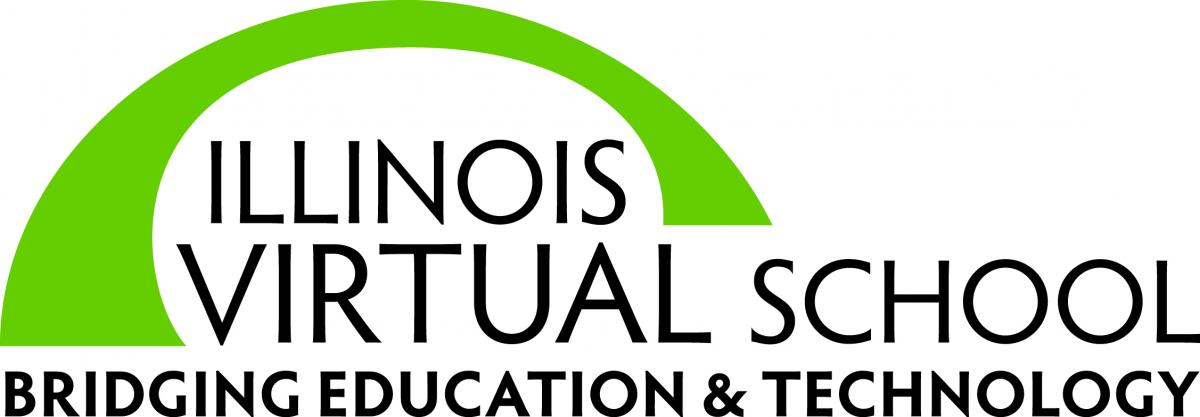Cindy Hamblin, Director of the Illinois Virtual School.
Cindy and her team from IVS have built a professional development program within IVS and new credit recovery options for students. Prior to her work at IVS, Hamblin was Director of the Area III Learning Technology Center. She assisted school districts with technology plans, 1:1 state initiatives, professional development and other programs to support educational technology in K-12 schools. She holds a Bachelor of Science in Business Education, and Masters in Instructional Technology and Telecommunications. She is the QM Coordinator for the Illinois Virtual School.

As online and blended learning grow in popularity and make their way into more schools and districts, educators tasked with building or growing their online and blended course offerings may face both successes and challenges related to training, support, quality control and implementation. “Our biggest challenge is time and human resources,” said Cindy Hamblin, Director of the Illinois Virtual School (IVS). “Teacher training and a desire to dive deep into objectives and assessments will require more time than originally planned."
About IVS
The IVS program is administered through the Peoria County Regional Office of Education (ROE), a member of the Illinois Association of Regional Superintendents of Schools (IARSS). The Peoria ROE began management and operation of the IVS April 1, 2009. IVS has sought to accelerate adoption and use of online learning within Illinois by working in partnership with more than 300 public and private schools. IVS offers classes to students and professional development programs for educators and partners with public, private, and home schools to provide:
Opportunities for students to take full service courses not offered by their face-to-face school(s) including Advanced Placement, foreign languages, and others;
Flexibility in scheduling;
Individualized instruction available anytime, anywhere, and any pace through teacher-managed courses.
IVS serves students from a number of districts, including the Chicago Public School District, and is proud of its 90.5 percent completion rate
The QM “Ask”
As IVS’ grew and began educating greater numbers of learners, it decided to investigate QM and was pleased with what it discovered. “The ‘kick-off’ meeting to introduce IVS faculty and staff to QM included a one-hour webinar in which Christine Voelker, Director of QM’s K-12 Program, provided background on QM’s history, processes, and success,” she remembered.
IVS announced its support for any teacher wanting to take the Applying The QM K-12 Secondary Rubric workshop, the gateway to the suite of QM professional development that leads to certifications and a greater familiarity with QM and its offerings. These teachers later shared what Cindy described as “positive thoughts about QM and the workshop experience.
The QM Rollout
Cindy found a largely positive reception to QM once IVS announced its use. “To date, faculty and staff buy-in for QM implementation has been positive,” she recalled. “IVS has provided QM training for a number of IVS staff and interested teachers.” The IVS team believes this will help with buy-in and support for for accomplishing tasks related to course improvement.
The IVS team has created an “X-Ray” document that pulls course objectives (Standard 2) and assessments (Standard 3) from our learning management system. This document is being used to check assessment alignment with objectives, balance of assessment types and descriptive criteria for each assessment.
A review of the Standards, particularly Standard 1, Course Overview and Introduction, led to the development of an IVS-specific checklist through which each teacher could conduct reviews of their courses. Teachers received support to improve items that didn’t meet standards. “Our success to this point has been our ability to take a general standard along with its specific standards and build a process for teacher training and subsequent course review,” Cindy reported.
IVS and QM: What’s Next
“We’re using QM to improve our existing courses and the Rubric in our course development process,” Cindy said “We’ve found that by stepping back and looking at courses through the QM lens, opportunities for course improvement appear.”
“Our goal is to have a number of IVS courses reviewed, meet standards and earn QM Certification,” Cindy continued. “To that end, IVS is using the QM K-12 Secondary Rubric, Second Edition, as the framework to conduct self- and course reviews.”
An upcoming IVS summer professional development (PD) series will be based on QM Standards 4 and 5. “We want teachers to leave the summer PD with a common language and working knowledge of appropriate instructional materials and learner engagement,” Cindy said. “The goals are for each teacher to identify any instructional materials in their courses that lack sufficient breadth or depth and to build new materials and/or activities that increase student engagement for the course materials identified as weak.” Strategies for increasing engagement will be presented by identified faculty followed by small group work time to incorporate the strategy.
IVS wants to ensure its courses meet QM Standards and are of the highest quality. “During the 2015-2016 school year, we’ll use QM-Certified IVS faculty to review select courses across departments,” Cindy said. “Once completed, IVS will schedule official QM reviews for key courses we hope receive the QM Certification stamp of approval.”
